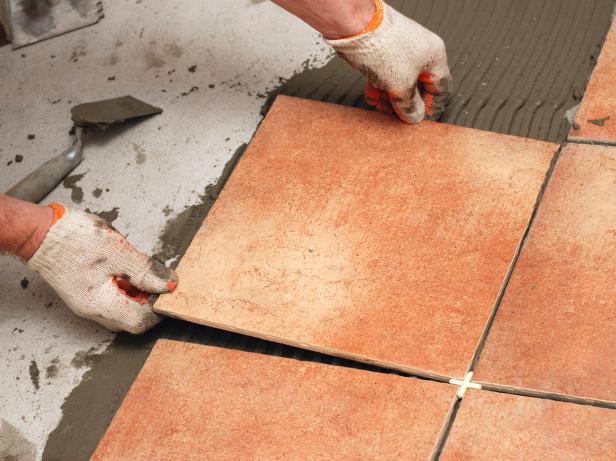Leading Choice for Top-Quality Tile Installation Austin Solutions
The Ultimate Overview to Professional Tile Installment Methods
Beginning on a trip to master the art of professional tile setup requires more than just a constant hand and an eager eye for detail. In the realm of floor tile installment, the adversary lies in the details, and this overview aims to unravel the ins and outs that establish professionals apart from amateurs.
Surface Prep Work Methods
Prior to commencing any type of ceramic tile setup task, detailed surface area preparation methods should be carefully implemented to make certain a flawless and durable result. The first action entails assessing the substrate to assure it is structurally audio and complimentary of any type of particles, oil, or dirt that can restrain appropriate adhesion. It is vital to repair any type of fractures or blemishes in the surface to stop future ceramic tile damages. Next off, the surface should be leveled making use of suitable compounds to create a smooth and also structure for the floor tiles. Correct waterproofing is essential, specifically in wet areas such as kitchen areas or restrooms, to stop moisture seepage and possible mold growth. Furthermore, using a guide especially made for the sort of substrate being used can boost bonding capabilities. Ultimately, verifying all surface preparation steps before waging tile installation is important to prevent pricey mistakes and make sure a professional surface that will certainly stand the test of time.
Tile Design and Design Tips
To achieve a structurally sound and aesthetically attractive ceramic tile setup, meticulous attention to floor tile design and layout is extremely important complying with detailed surface area preparation strategies. When intending your tile layout, consider the size and form of the floor tiles in relationship to the dimensions of the room.
In regards to design, the design ought to match the design of the area. As an example, a herringbone pattern can add a touch of sophistication to a typical area, while a geometric pattern can bring a contemporary panache. Try out different layouts, such as checkerboard or angled patterns, can likewise add visual passion to the style. Inevitably, the secret is to strike an equilibrium between capability and aesthetic appeals to create a stunning floor tile installment that improves the room.
Cutting and Forming Ceramic Tiles
When precision is necessary in achieving a smooth floor tile installation, mastering the art of reducing and shaping tiles is critical. Whether functioning with ceramic, porcelain, or all-natural rock floor tiles, the ability to make precise cuts and carefully shape tiles to fit about barriers, edges, or one-of-a-kind rooms is basic to a specialist finish.
There are various tools readily available to aid in reducing and shaping ceramic tiles properly. Tile cutters are suitable for straight cuts, racking up the surface area before applying pressure to snap the ceramic tile easily. For more detailed cuts, tile nippers or floor tile saws can be used to achieve contours or notches with accuracy. In addition, damp saws are typically employed for cutting tougher products like rock or porcelain.
When forming floor tiles, making use of floor tile files or sandpaper can help smooth rough edges or fine-tune the shape for an ideal fit. It's important to determine precisely and note the ceramic tile before cutting to avoid errors that might threaten the setup's quality. By sharpening these cutting and shaping methods, experts can make sure a remarkable tile installation every single time.
Proper Setup Methods
Utilizing well-known sector standards and careful interest to detail, specialist ceramic tile installers implement correct installment methods with accuracy and competence. Specialist installers carefully choose the appropriate glue based on factors such as tile type, substratum product, and the setting where the floor tiles will certainly be set up.

Additionally, proper spacing in between tiles is important to create a aesthetically appealing and structurally audio installation. By complying with these careful actions, expert floor tile installers can guarantee a premium installment why not look here that fulfills market requirements and surpasses consumer expectations.

Grouting and Securing Procedures
Professional tile installers meticulously implement grouting and sealing treatments to make certain the durability and visual Source appeal of the tiled surface. Grouting is the final action in a ceramic tile installation job and involves filling the spaces between tiles to protect against moisture, dust, and prospective tile activity. Selecting the right cement shade can additionally significantly impact the general appearance of the tiled location. It is essential to mix the grout to the proper consistency and apply it uniformly, pressing it right into the joints with a rubber float. As soon as the cement has actually dried, normally after 24-72 hours, the tiles are prepared for sealing.
This safety layer inhibits the penetration of fluids and dirt, making upkeep less complicated and extending the life of the ceramic tile installment. Professional floor tile installers focus on these grouting and securing procedures to deliver high-grade, resilient, and aesthetically appealing tiled surfaces.
Conclusion

To achieve a structurally audio and visually appealing tile setup, careful focus to ceramic tile format and layout is extremely important following like it extensive surface area prep work methods - tile installation austin. Tile cutters are ideal for straight cuts, racking up the surface before using stress to break the tile easily. Professional installers meticulously choose the appropriate adhesive based on factors such as tile kind, substratum material, and the setting where the floor tiles will be mounted
Grouting is the final step in a ceramic tile installation job and entails filling up the gaps between ceramic tiles to safeguard versus dampness, dirt, and prospective tile motion.In final thought, specialist tile setup needs careful surface preparation, precise tile layout and style, precise cutting and shaping strategies, correct installation approaches, and complete grouting and securing procedures.